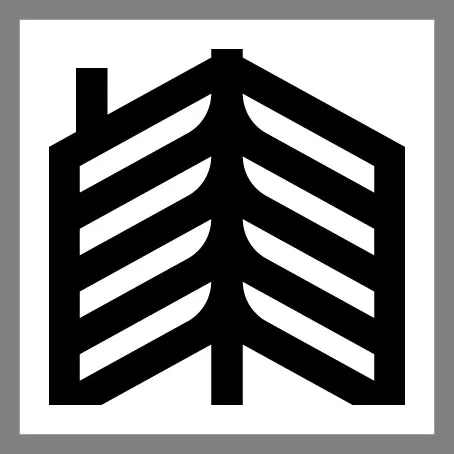Subfloor preparation: Many homeowners embark on flooring projects with visions of beautiful finished products, only to be surprised by the hidden world beneath.
Table of Contents
Ever ripped out that old carpet, dreamt of gleaming hardwood floors, then gotten a sinking feeling in your gut? You’re not alone. Many homeowners embark on flooring projects with visions of beautiful finished products, only to be surprised by the hidden world beneath – the subfloor.
The subfloor is the unsung hero of any flooring system. It acts as the unseen foundation, providing a stable, level platform for your dream floors. Skipping proper subfloor preparation is a recipe for disaster down the line. Unevenness can lead to creaks, gaps, and even damage to your new flooring. Moisture issues can cause warping, buckling, and even mold growth.
But fear not, fellow DIY warriors! While subfloor prep might sound intimidating, with the right knowledge and a little effort, you can tackle this project yourself and lay the groundwork for stunning, long-lasting floors. This comprehensive guide will equip you with the knowledge and confidence to become a subfloor prep pro.
So, what exactly is a subfloor? Think of it as the structural layer that sits directly beneath your finished flooring material (carpet, tile, hardwood, etc.). It provides a smooth, level surface for installation and distributes weight evenly throughout the room. Subfloors can be made from various materials, with plywood and concrete being the most common.
Why should you consider DIY subfloor prep? The benefits are numerous. First and foremost, it can be a significant cost-saver. Hiring professional subfloor preparation can add a hefty chunk to your project budget. Taking on this task yourself allows you to allocate those funds towards your dream flooring material or other aspects of your renovation.
Beyond the financial advantage, there’s a deep sense of satisfaction that comes from completing a project yourself. Learning the process and conquering the subfloor prep challenge will not only empower you but also ensure you have a thorough understanding of the foundation beneath your beautiful new floors.
Understanding Your Subfloor
Now that you’re prepped and motivated to tackle your subfloor prep like a pro, let’s delve into the different types of subfloors you might encounter. The most common subflooring materials fall into three categories:
- Plywood: A popular and versatile choice, plywood is made from layers of thin wood veneers glued together in a crisscross pattern. This construction provides superior strength and stability compared to solid wood boards. Plywood subfloors are often used in raised floor constructions with floor joists beneath.
- Concrete: Solid and durable, concrete subfloors are frequently found in basements, slabs on grade (homes built directly on a concrete foundation), and some older homes. While incredibly strong, concrete subfloors require careful moisture control measures before installing new flooring.
- Oriented Strand Board (OSB): A more affordable alternative to plywood, OSB is an engineered wood product made from compressed wood strands bonded with resin. While offering good strength and stability, OSB is generally not as moisture-resistant as plywood and may not be suitable for all applications.
Identifying your subfloor type is a crucial first step. For raised floor constructions, simply remove a floor vent or heating register to get a clear look at the subfloor material. In basements or crawlspaces, you can directly inspect the exposed subfloor.
Here’s a handy tip: Tapping on the subfloor with a hammer can also be informative. A solid, consistent sound indicates a healthy concrete subfloor. Plywood will produce a slightly more hollow sound, while OSB might sound slightly duller.
Once you’ve identified your subfloor material, it’s important to understand its subfloor deflection rating. This rating specifies the maximum allowable amount of bending or deflection the subfloor can undergo under a specific load. Essentially, it reflects the subfloor’s ability to maintain a level surface underfoot. Building codes typically dictate the required deflection rating for different flooring types. Knowing your subfloor’s rating will help determine if any additional leveling or reinforcement might be necessary for your chosen flooring material.
We’ll delve deeper into assessing your subfloor’s condition and specific prep requirements for different flooring types in the next sections. But for now, you’ve taken a significant step towards subfloor mastery by understanding the different materials and their key characteristics.
Assessing Your Subfloor Condition
Before diving headfirst into installation, inspecting your subfloor is absolutely essential. Think of it as giving your subfloor a thorough medical checkup. This evaluation will help identify any underlying issues that could compromise the success of your new flooring project.
Here’s why a meticulous subfloor inspection is crucial: An uneven subfloor can translate to creaky floors, uneven tile lines, and gapping in hardwood planks. Moisture problems can lead to warped or buckled flooring, and in severe cases, even mold growth. Identifying and addressing these issues upfront will ensure a smooth, stable, and long-lasting foundation for your beautiful new floors.
So, how do you spot these subfloor gremlins? Here are some common subfloor problems to watch out for:
- Unevenness: The most straightforward way to check for unevenness is by using a straight edge and level. Drag the straight edge across the subfloor in various directions, checking for any gaps that exceed the allowable tolerance for your chosen flooring material. (We’ll discuss specific flatness requirements in a later section). Unevenness can also be detected by simply walking on the subfloor and feeling for any soft spots or dips.
- Moisture Damage: Excess moisture is the enemy of subfloors. Water can cause warping, buckling, and even rot. Use a moisture meter to measure the moisture content of your subfloor. Concrete subfloors should ideally have a moisture content below 3.5%, while plywood subfloors should be below 12%. Visible signs of water damage, such as staining or warping, can also be red flags.
- Rot: Moisture damage left unchecked can lead to rot, especially in organic subfloor materials like plywood or OSB. Rotting subfloors will feel soft and spongy when stepped on, and may crumble when prodded with a screwdriver. The presence of musty odors or visible mold growth are further indications of potential rot issues.
- Squeaks: Squeaky floors are not just annoying, they can also indicate underlying problems. Loose floorboards, nails working their way out, or friction between subfloor and joists can all contribute to squeaks. While not necessarily a dealbreaker, identifying the source of the squeaks will allow you to address them during the subfloor prep process.
Here’s a quick tip: Combine a visual inspection with a walking test. Walk slowly across the subfloor in different directions, paying attention to any unevenness, soft spots, or creaking sounds. This comprehensive approach will help you uncover any potential subfloor problems lurking beneath the surface.
In the next section, we’ll explore how to tailor your subfloor prep strategy to different flooring types, taking into account specific requirements for flatness, moisture control, and soundproofing. By addressing any identified subfloor issues effectively, you’ll be well on your way to laying the groundwork for stunning and long-lasting floors.
Subfloor Prep for Different Flooring Types
Now that you’ve mastered the art of subfloor inspection, let’s delve into tailoring your subfloor preparation strategy to the specific flooring material you’ve chosen. Remember, different flooring types have varying requirements for flatness, moisture control, and soundproofing. Here’s a quick breakdown to guide you:
- Subfloor Prep for Tile: Tile is a dream choice for kitchens, bathrooms, and laundry rooms, offering durability and timeless style. For a successful tile installation, subfloor flatness is paramount. Unevenness can translate to cracked tiles down the line. Aim for a tolerance of about 1/8 inch (3 mm) over a 10-foot span. Moisture control is also crucial for tile. A subfloor moisture barrier is typically required to prevent moisture from seeping up and damaging the tile or grout. Soundproofing might not be a major concern for tile flooring, but using sound isolation mats beneath the subfloor can be beneficial in multi-story homes.
- Subfloor Preparation for Hardwood Floors: The warmth and elegance of hardwood floors elevate any space. Here, subfloor flatness is even more critical than with tile. Unevenness can cause creaking and gapping in the hardwood planks. Strive for a tolerance of about 1/16 inch (1.5 mm) over a 6-foot span. Moisture control is equally important for hardwood, as moisture fluctuations can cause warping and cupping. A moisture barrier is a must, and in some cases, a vapor barrier might be recommended depending on your climate and subfloor type (concrete vs. plywood). Soundproofing becomes more relevant with hardwood floors, especially in upper levels of a home. Consider using sound isolation mats or a soundproofing underlayment beneath the hardwood planks for improved noise reduction.
- Subfloor Prep for Vinyl Plank Flooring: Luxury vinyl plank (LVP) flooring offers a stylish and water-resistant alternative to hardwood. Subfloor flatness requirements for LVP are generally less stringent compared to tile or hardwood. A tolerance of 1/8 inch (3 mm) over a 8-foot span is usually acceptable. However, moisture control remains important to prevent warping or buckling of the vinyl planks. A moisture barrier is recommended, especially for concrete subfloors. Soundproofing might be a consideration depending on the specific LVP product and your desired noise reduction level. Some LVP products come with a pre-attached soundproofing underlayment, while others may require a separate underlayment pad for optimal noise reduction.
New vs. Existing Subfloors: The basic principles of subfloor preparation apply to both new subfloor installations and prepping existing subfloors before installing new flooring. However, with existing subfloors, you’ll likely spend more time on inspection and addressing any identified issues like unevenness, moisture damage, or rot. In some cases, significant repairs or even subfloor replacement might be necessary before proceeding with your new flooring project.
By understanding the specific subfloor prep requirements for your chosen flooring material, you can ensure a smooth, stable, and long-lasting foundation for your beautiful new floors. In the next section, we’ll delve into the practical steps involved in DIY subfloor prep, equipping you with the knowledge and confidence to tackle this project like a pro.
DIY Subfloor Preparation Steps: Laying the Foundation for Success
Now that you’re armed with the knowledge of different subfloor types, potential problems, and variations based on flooring materials, let’s dive into the practical steps of DIY subfloor prep. Here’s a breakdown of the essential tasks to get you started:
1. Clear the Area: This might seem obvious, but it’s crucial to clear the room of all furniture, fixtures, and belongings. This provides ample workspace and unrestricted access to the subfloor. Don’t forget to remove any baseboards or trim that might be in the way.
2. Remove Old Flooring: The next step is to remove any existing flooring. The removal process will vary depending on the type of flooring you’re currently dealing with (carpet, tile, hardwood, etc.). For carpets, a carpet cutter or utility knife can be used to remove the carpet and padding. Removing tile flooring typically involves a hammer, chisel, and possibly a floor scraper for stubborn areas. Removing hardwood planks usually requires a pry bar and a hammer to loosen and remove the nails.
Safety First! Always wear safety glasses and work gloves when removing old flooring to protect your eyes and hands from debris or sharp objects. For dusty removal processes, consider wearing a dust mask to avoid inhaling dust particles.
3. Address Minor Unevenness: Once the old flooring is removed, it’s time to assess the subfloor for minor unevenness. As discussed earlier, the allowable tolerance for flatness will vary depending on your chosen flooring material. For small dips or high spots, sanding is often a sufficient solution. A random orbital sander equipped with coarse grit sandpaper can effectively smooth out these minor imperfections.
Pro Tip: For more significant unevenness or dips in the subfloor, you might need to consider self-leveling compound. We’ll discuss this technique in more detail in a later section.
4. Clean Up Thoroughly: After addressing unevenness, give the subfloor a thorough cleaning. Sweep or vacuum the entire area to remove any dust, debris, or fasteners left behind from the previous steps. A clean subfloor ensures proper adhesion for any materials you might be applying in the following steps, such as moisture barriers or underlayment.
Remember: Subfloor prep might generate dust. Proper ventilation is key. Open windows and doors whenever possible to allow for air circulation. If dust is a major concern, consider using a shop vac with a HEPA filter for more efficient dust collection.
By following these steps carefully, you’ll have successfully completed the initial phase of DIY subfloor prep. In the next section, we’ll explore solutions for addressing more substantial subfloor problems and delve into techniques like using self-leveling compound for a perfectly level subfloor.
Addressing Subfloor Problems: Conquering Common Challenges
While the previous section focused on basic subfloor prep tasks, sometimes you might encounter more substantial issues that require specific solutions. Let’s explore how to tackle some common subfloor problems:
- Unevenness: For minor unevenness beyond what sanding can address, self-leveling compound comes to the rescue. This pourable material creates a smooth, level surface perfect for new flooring installations.
Applying self-leveling compound is a relatively straightforward process:
- Mix the compound: Following the manufacturer’s instructions, mix the self-leveling compound with water in a designated mixing container.
- Pour the compound: Starting at one end of the room, carefully pour the mixed compound onto the subfloor. Use a notched trowel to spread the compound and achieve a consistent thickness.
- De-airing: As you pour, use a de-airing roller to remove any air bubbles trapped within the compound. These bubbles can create imperfections in the finished level surface.
- Smoothing and leveling: Once the compound is poured, use a smoothing trowel to create a flat, even surface.
- Drying and sanding: Allow the self-leveling compound to dry completely according to the manufacturer’s recommended drying time. Once dry, you can use a sanding block with fine-grit sandpaper to smoothen any minor imperfections on the leveled surface.
Important Note: Self-leveling compound is typically suitable for addressing minor dips and unevenness. For significant subfloor depressions or major structural issues, consulting a professional flooring contractor is highly recommended.
- Moisture Damage: If you encounter moisture damage, the extent of the repair will depend on the severity of the issue. For minor moisture concerns, allowing the subfloor to dry completely and installing a subfloor moisture barrier might suffice. A moisture barrier acts as a vapor retarder, preventing moisture from migrating up from the subfloor and damaging the new flooring.
However, for severe moisture damage or rot, more extensive repairs or even subfloor replacement might be necessary. In such cases, seeking the expertise of a qualified flooring contractor is the best course of action.
- Squeaky Subfloors: Squeaky floors can be caused by various factors, such as loose floorboards, nails working their way out, or friction between the subfloor and joists. Depending on the source of the squeak, solutions might involve re-nailing loose floorboards, replacing worn nails with screws, or applying shims to tighten gaps between the subfloor and joists.
By addressing these common subfloor problems effectively, you’ll ensure a solid and stable foundation for your new flooring. Remember, when dealing with significant subfloor damage or complex repairs, consulting a professional can save you time, money, and frustration in the long run.
In the next and final section, we’ll wrap up with some concluding remarks and resources to empower you on your subfloor prep journey!
Conclusion: Your Subfloor Prep Journey Awaits!
Congratulations! You’ve embarked on a thrilling journey into the world of subfloor prep. This guide has equipped you with the knowledge and confidence to tackle basic subfloor prep tasks, identify common subfloor problems, and explore solutions to address them. Remember, subfloor prep is an essential step for a successful flooring project. By following these subfloor preparation tips, you’ll lay a strong and stable foundation for your beautiful new floors.
The world of subflooring is vast, and there’s always more to learn. As you delve deeper into your specific project, research is your friend! Manufacturer recommendations for your chosen flooring material and online resources tailored to your subfloor type can provide valuable insights. With dedication and the knowledge you’ve gained here, you’re well on your way to subfloor prep mastery and stunning new floors that will grace your home for years to come.



